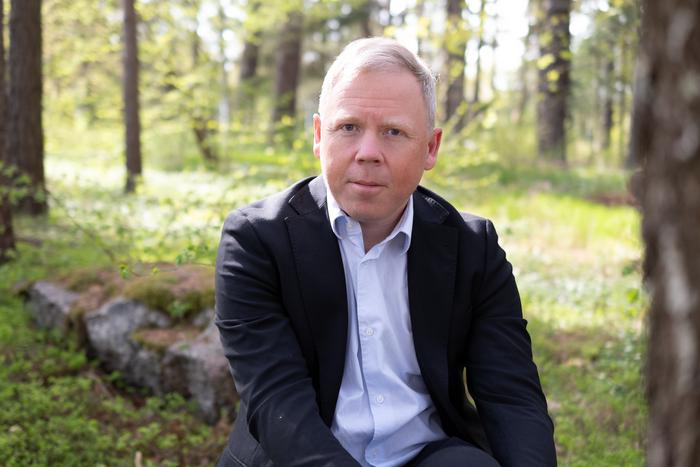As the world grapples with the ongoing climate crisis, the focus on carbon dioxide emissions from industry has intensified. Recent research indicates that global emissions from industrial activities could potentially be reduced by as much as five percent. However, this ambitious target necessitates a comprehensive approach that transcends mere technological innovations. Researchers from Linköping University, along with their colleagues from various notable institutions, argue for a more holistic view on energy efficiency that encompasses changes in organizational behavior and culture.
In an era where climate-related challenges are urgent, many industries have traditionally equated energy efficiency with technological enhancements. This has resulted in a rather limited perspective on what energy efficiency entails. Companies often invest heavily in new energy-efficient equipment, believing that such measures alone will suffice. Patrik Thollander, a leading researcher and Professor in Energy Systems at Linköping University, highlights the inadequacy of this narrow focus, stating that understanding and improving energy efficiency requires a broader perspective.
The concept of energy efficiency gained prominence during the oil crisis of the 1970s, driven by skyrocketing energy prices. Companies invested in measures that promised to reduce operational costs through improved energy use. Fast-forward to today, and the narrative has evolved. Both the International Energy Agency (IEA) and the European Commission underscore the critical role of energy efficiency as both an immediate necessity and a fundamental element in attaining climate neutrality. Despite this recognition, findings indicate an alarming amount of untapped potential in the realm of energy efficiency.
Thollander and his colleagues postulate that achieving significant reductions in carbon dioxide emissions hinges not only on technological advancements but also on a fundamental rethinking of how organizations approach energy use. They emphasize the importance of fostering system-wide processes and promoting knowledge sharing within industries. Over the years, energy efficiency has been predominantly tied to technological upgrades, leaving a vast array of behavioral and cultural factors unaddressed.
Industry leaders and engineers often approach energy challenges with a narrow mindset, primarily targeting technological fixes. Thollander advocates for a shift in perspective that embraces interdisciplinary collaboration—a strategy that melds viewpoints and expertise from engineering with insights derived from social sciences and behavioral psychology. This blending of disciplines can unlock potential improvements in energy management and efficiency that would otherwise remain dormant.
In their research, the team has pinpointed nine social constructs essential for industries striving to refine their processes surrounding energy efficiency and management. These constructs encompass a variety of strategic components, including organizational culture, knowledge dissemination, and employee engagement. By cultivating a corporate culture that prioritizes sharing knowledge and continuous improvement, the researchers believe that companies can realize significant energy savings and emission reductions.
The researchers estimate that the integration of these factors could result in a conservative five percent reduction in the industrial sector’s global carbon dioxide emissions. To put this into perspective, the IEA estimated that the industrial sector emitted approximately 9.2 gigatonnes of carbon dioxide in 2022. A five percent reduction in emissions equates to a significant environmental impact, comparable to the total emissions produced by ten nations of Sweden’s size.
Collaboration plays a pivotal role in achieving these ambitious targets. Thollander emphasizes that cross-disciplinary collaborations can yield innovative solutions that may not emerge from traditional technical silos. By including a diverse range of professional experiences in energy discussions, industries can gain fresh insights that drive efficient practices and technologies. This interdisciplinary approach fosters environments where radical changes in energy use can be imagined and executed.
Policy makers also hold a noteworthy responsibility in this transformational journey. It is imperative that they construct programs that underscore the social dimensions of energy efficiency. By doing so, they can nurture the emergence of corporate cultures that emphasize continuous learning, collaborative efforts, and the sharing of best practices among industries dedicated to reducing their carbon footprints.
Furthermore, the importance of education and training in this context cannot be overstated. As industries evolve in their understanding of energy efficiency, a workforce equipped with both technical skills and an awareness of social dynamics will be essential. Continuous professional development and training will ensure that employees remain engaged and informed, facilitating ongoing improvements in organizational practices around energy management.
In summary, as industries confront the pressing need to reduce greenhouse gas emissions, researchers urge a shift away from a simplistic view of energy efficiency, advocating for comprehensive changes in organizational culture, collaboration, and knowledge dissemination. The potential for significant reductions in carbon emissions lies not just in technology but in the collective rethinking of how we as a society manage and use energy. By embracing these approaches, industries can play a vital role in combating the climate crisis—creating a sustainable future that benefits not just businesses but the planet as a whole.
Subject of Research: Energy Efficiency and Carbon Emissions in Industry
Article Title: Advances in the social construction of energy management and energy efficiency in industry
News Publication Date: 30-Apr-2025
Web References: DOI Link
References: Nature Communications
Image Credits: Teiksma Buseva
Keywords
Energy Efficiency, Carbon Emissions, Climate Crisis, Interdisciplinary Collaboration, Organizational Culture, Energy Management, Sustainability, Industrial Practices.
Tags: carbon footprint mitigation in manufacturingcomprehensive energy management solutionscultural change in energy useenergy efficiency in industryglobal climate crisis responsehistorical context of energy efficiencyholistic approach to energy efficiencyindustrial CO2 emissions reduction strategiesLinköping University research on emissionsorganizational behavior in energy managementsustainable industrial practicestechnological innovations for emissions reduction





